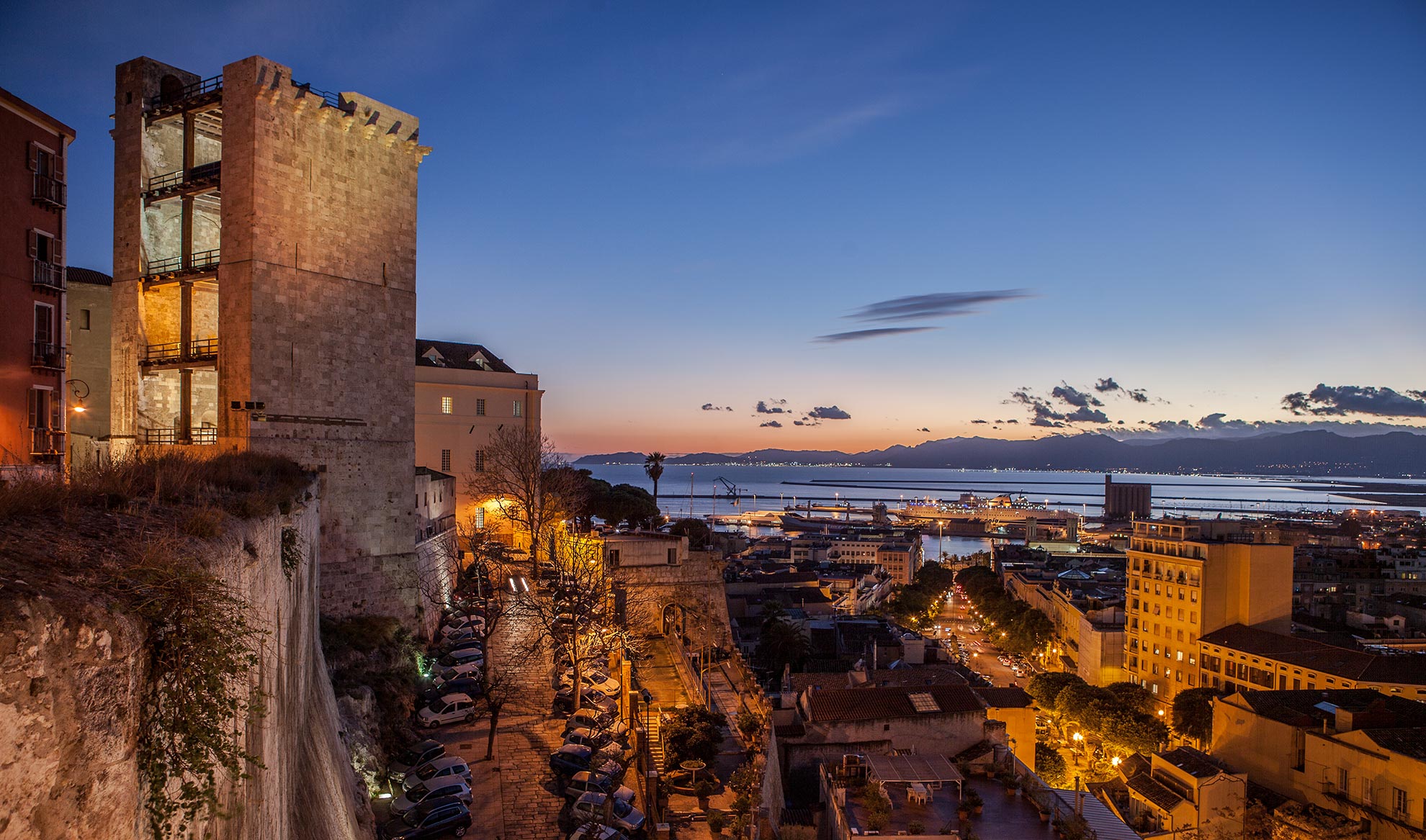At the beginning of the fourteenth century, Pisa, in response to the threatening Aragon rise in the Mediterranean Sea, erected impressive towers in order to reinforce its stronghold in the south of Sardinia. Designed by the Sardinian architect Giovanni Capula, the Elephant Tower and the St. Pancras Tower were praised for their uniqueness, and, in 1535, Charles V, the powerful sovereign of the Holy Roman Empire, included them among the best military works of the entire Europe.
Completed in 1306-1307, with its walls of thick limestone blocks, its narrow loopholes and its heavy gates, the Elephant Tower protected the south-western side of Castello; developed on four levels with a total height of more than thirty metres, it was also an excellent lookout station against any possible attack from the sea.
Even today it is one of the most striking accesses to Castello, while in the past it was also used as a powder magazine, armoury and prison.
In comparison to the St. Pancras Tower, the Elephant Tower is more well-refined and it is also decorated by the marble statue of an elephant, exposed on the facade, perhaps a symbol of the Pisan maritime power.
Restored to its original appearance, nowadays the Elephant Tower is open to visitors, by the entrance at the right side of the church of St. Joseph.
Visitors are allowed to climb up to the fourth floor. The summit of the tower is not open to the public.
Torre dell’Elefante
Torre dell’Elefante
Via Santa Croce, snc (angolo via Università)
City
CagliariEntrance fee
€ 3.00
€ 2.00
€ 1.00
€ 8.00
Add new review
Your review will be visible after approval by the editors
To post a review you must be an authenticated user.
Log in with Social Login
